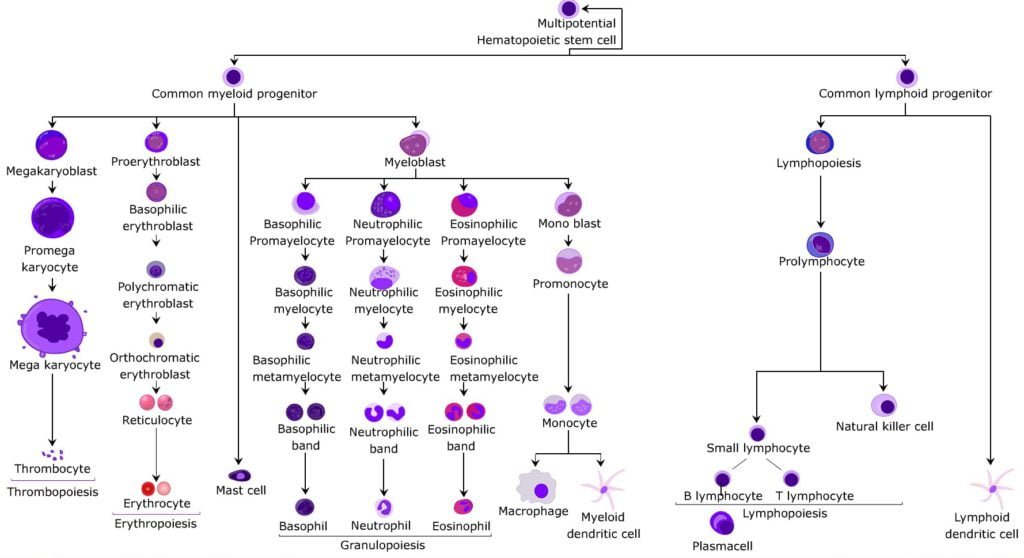Hematopoiesis in Animals
Hematopoiesis in animals refers to the process of forming erythrocytes, leukocytes, and platelets in the body. The formation of erythrocytes and leukocytes is specifically known as erythropoiesis and leukopoiesis, respectively.
During the embryonic stage, the blood islands of Pander in the yolk sac function as a site of hematopoiesis. In early fetal life, the mesenchymal cells of the liver, spleen, bone marrow, and lymph glands serve as hematopoietic organs.
In postnatal life, the bone marrow is primarily responsible for producing erythrocytes, granulocytes, and platelets, whereas lymphocytes are produced in the lymphoid tissues of lymph glands, Peyer’s patches of the intestine, spleen, and thymus.

The lymphoid tissues of the bone marrow and spleen serve as sites for monocyte production. In ruminants, hemolymph nodes (hemal nodes) function similarly to the spleen. They participate in erythropoiesis during the fetal period, while granulopoiesis becomes more prevalent in postnatal life.
The mesenchymal cells of the yolk sac produce primitive stem cells, which give rise to pluripotent stem cells (colony-forming units, CFUs). These stem cells further differentiate into five distinct blast cells, namely:
- Proerythroblast to form RBCs
- Myeloblast to form neutrophils, eosinophils, and basophils
- Monoblast to form monocytes
- Lymphoblast to form lymphocytes
- Megakaryoblast to form platelets
Depending on the microenvironment, i.e., the location of the stem cells and the growth factors, the stem cells differentiate into progenitor cells of different blood cells (Committed Stem Cells – CSC).
A CSC that produces erythrocytes is called a colony-forming unit-erythrocyte (CFU-E). Similarly, CFUs that produce granulocytes and monocytes are designated as CFU-GM (colony-forming unit-granulocyte/monocyte).
Stem cells continue to divide throughout the life of an animal. Some of these cells remain as pluripotent stem cells, which are retained in the bone marrow to ensure a continuous supply of stem cells.
Pluripotent stem cells differentiate to form colony-stimulating cells (CSC). Several hematopoietic growth factors and differentiation factors stimulate the growth and differentiation of these stem cells into specific progenitor cells.
Cytokines are growth factors that regulate blood cell formation. Two key cytokines that stimulate red blood cell (RBC) and white blood cell (WBC) formation are colony-stimulating factors (CSFs) and interleukins. Additionally, erythropoietin enhances the formation of erythrocyte precursors.